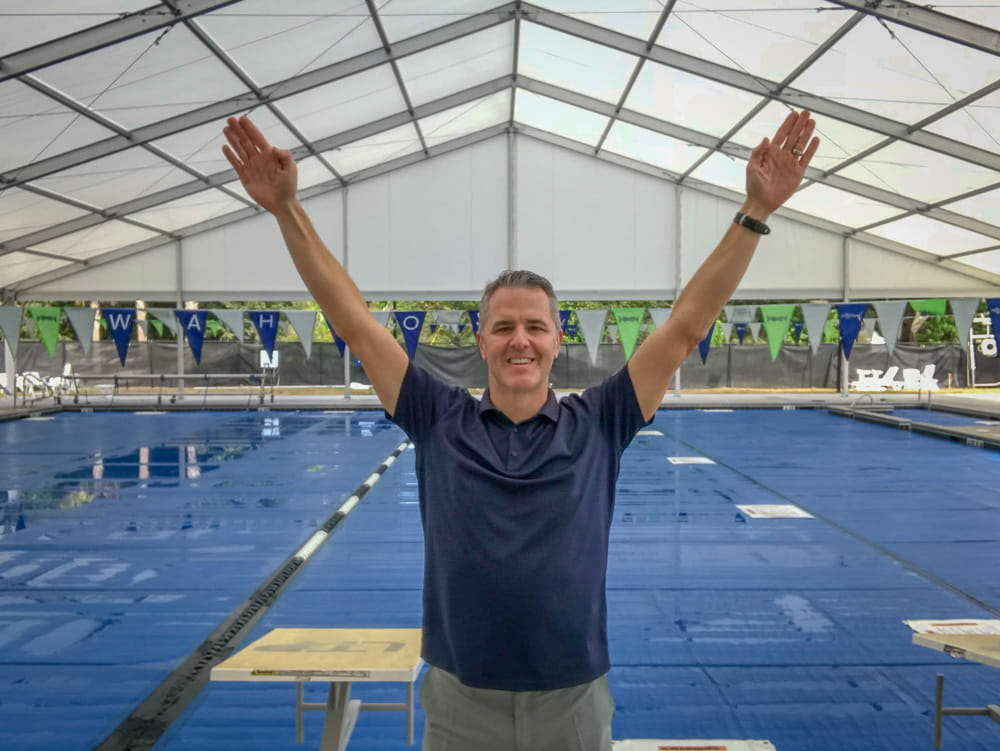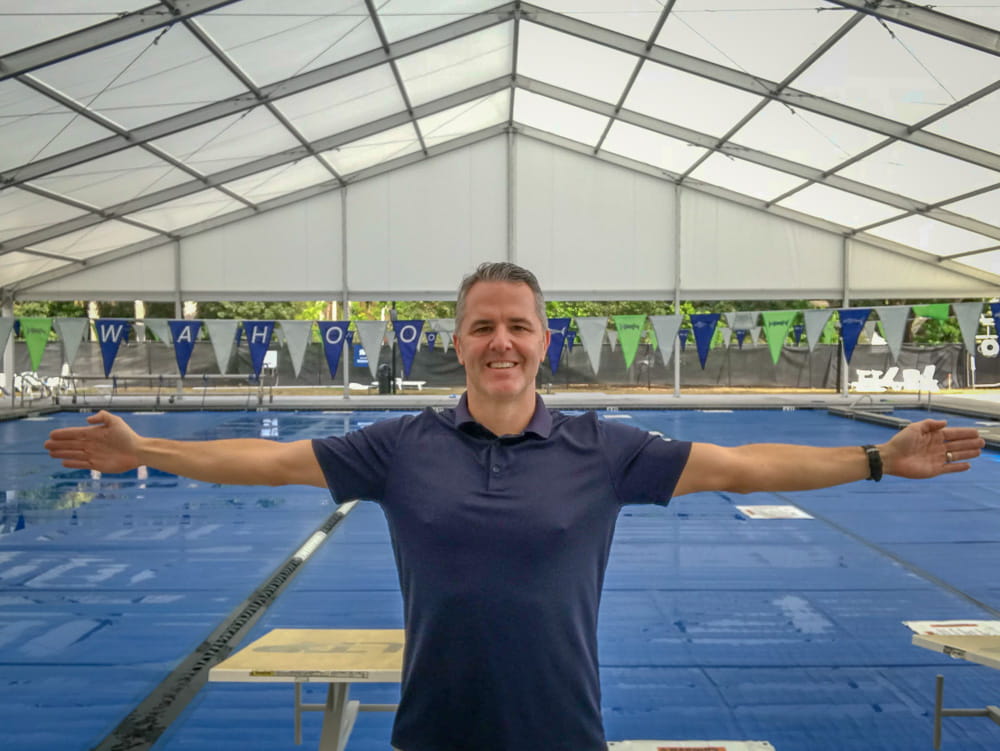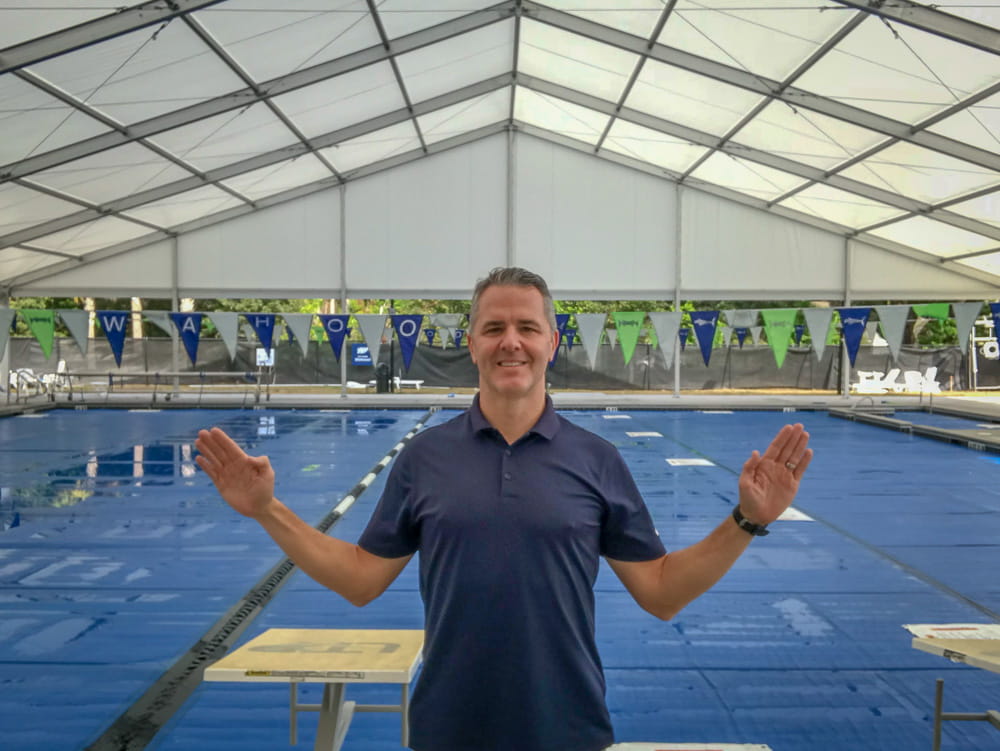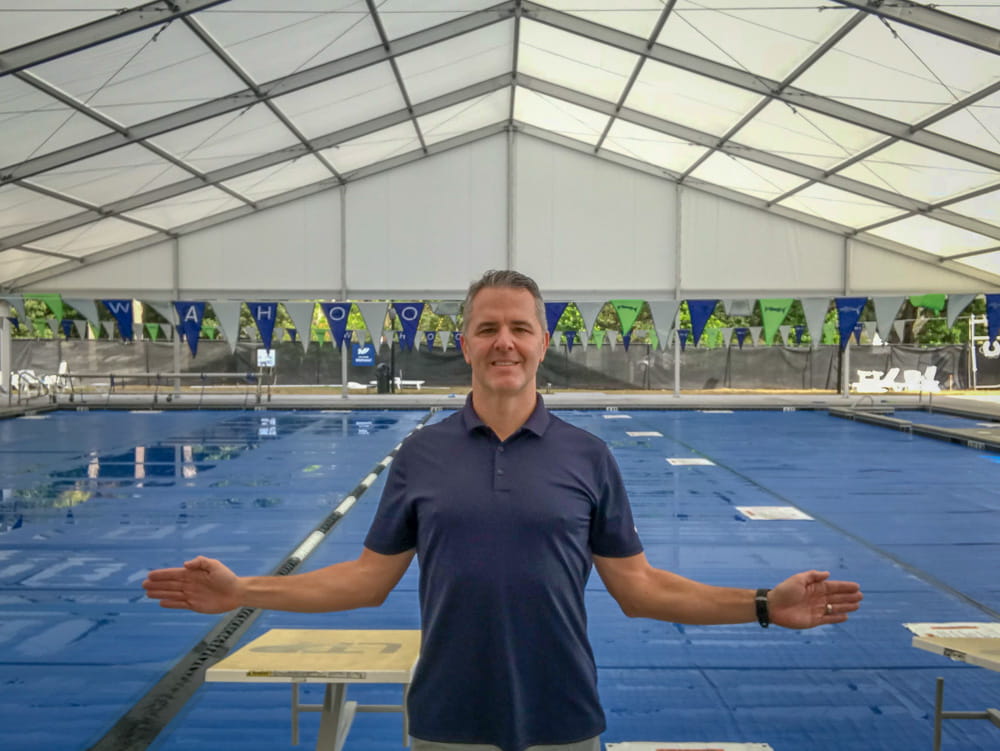How to Get Rid of That Swimmer's Slouch
Overuse of shoulder muscles can lead to poor posture
We’ve all heard of the “swimmer’s slouch,” that slightly hunched-over posture that can happen when chest muscles tighten and shorten, while back muscles elongate.
It’s particularly common with those who swim mainly on-your-stomach strokes, backstroke being stricter about maintaining a fairly straight spine. Maybe, as teens, we wore that posture with pride, perhaps exaggerating it a bit, as if to inform the world: “I’m at my best in the water.”
But as Masters swimmers, the slouch is decidedly less cool. Many of you already spend so much time hunched over—at a computer, behind the wheel, texting—that you might be slouching before you even get to practice. Swimming freestyle, with the stroke’s heavy reliance on chest muscles, can exacerbate the situation. And let’s face it: Most swimming workouts are 80 percent freestyle, says Lance Ogren, head coach of Palmetto Masters in Mount Pleasant, S.C.
Ogren recommends developing the back muscles to counteract the slouch. And for that, “doing rows”—on a rowing machine, where you’re pulling a band toward your chest, or standing and using a stretch cord—“is probably the best thing to do,” beyond regular shoulder exercises, he says, for maintaining a balance in upper-body muscles.
Using a rowing machine or doing rows on weight-training equipment engages both shoulder and back muscles, explains Dr. Kenneth Veenema, an orthopedist and director of primary care sports medicine for MedStar Medical Group in Baltimore. Performing a rowing motion engages the core muscles and glutes, adds Allyson Friday, a physical therapist with ALTA Physical Therapy & Pilates in Boulder, Colo. It’s a great way to counteract all the freestyle miles Masters swimmers log.
Friday encourages her clients to do integrative strengthening, or engaging multiple muscles at once. About 30 percent of Friday’s clientele consists of swimmers, and many of them turn to physical therapy for injury prevention.
“Swimmers are usually developed in their pecs and upper traps, so using the middle and lower traps and lats and learning how to move from and engage the core and the hip” are key to achieving a muscularly balanced body, Friday says. She urges her clients to “get out of [using only] the shoulder and neck and get into [using] the torso and upper back,” too.
She often asks clients to complete a set of 10 to 15 rowing repetitions while standing on both legs and then to do a set standing first on one leg, followed by another set standing on the other leg. In a single-leg stance, the strengthening exercise is more dynamic, and it gives the core a workout, too. And it’s more like swimming, in which, because “our feet aren’t planted on the ground … you have to work from your core,” she says.
Just be sure to keep shoulder movements within a range of zero to 45 degrees from the body when using a rowing machine, cautions Veenema, who also specializes in working with swimmers. “Repetitive motion beyond this level puts your shoulders at risk for impingement,” he says.
Focusing on good swimming posture will also help eliminate the slouch, adds Ogren, who founded Ogren Swim Coaching in 2015 and is certified by U.S. Masters Swimming.
Good swimming posture is a lot like good walking or standing posture: The shoulders are back, the head is in a neutral position, and the chest is slightly out. “Just like mom used to say,” Ogren advises, “’Sit up straight!’”
In terms of swimming drills, “any type of posture drill that gets your shoulders back” will help, Ogren says. Ogren suggests kicking on your side while wearing a big pair of fins. Throwing your shoulder blades back during the drill exaggerates the posture you want when you’re swimming.
Ogren also recommends double-arm backstroke to open your shoulders after a lot of freestyle. And, before practice, he encourages swimmers to do the “Y, T, W, L” stretch, poolside: First, raise your arms up at 45-degree angles from your torso to make a “Y” shape (as though you’re dancing to the “YMCA” song), then straighten your arms out to make a “T” shape. Next, bend your elbows down to form a “W,” then drop your elbows and forearms to form a right-angle “L” with each arm. That’ll get your back straight and your shoulders back.
Keeping your core, glutes, and back strong; swimming with good posture; and opening your shoulders will go a long way toward evening out chest and back muscles. We’re Masters swimmers, and proud of it—so no slouching!Categories:
- Technique and Training
SIGN UP FOR UPDATES FROM USMS




















